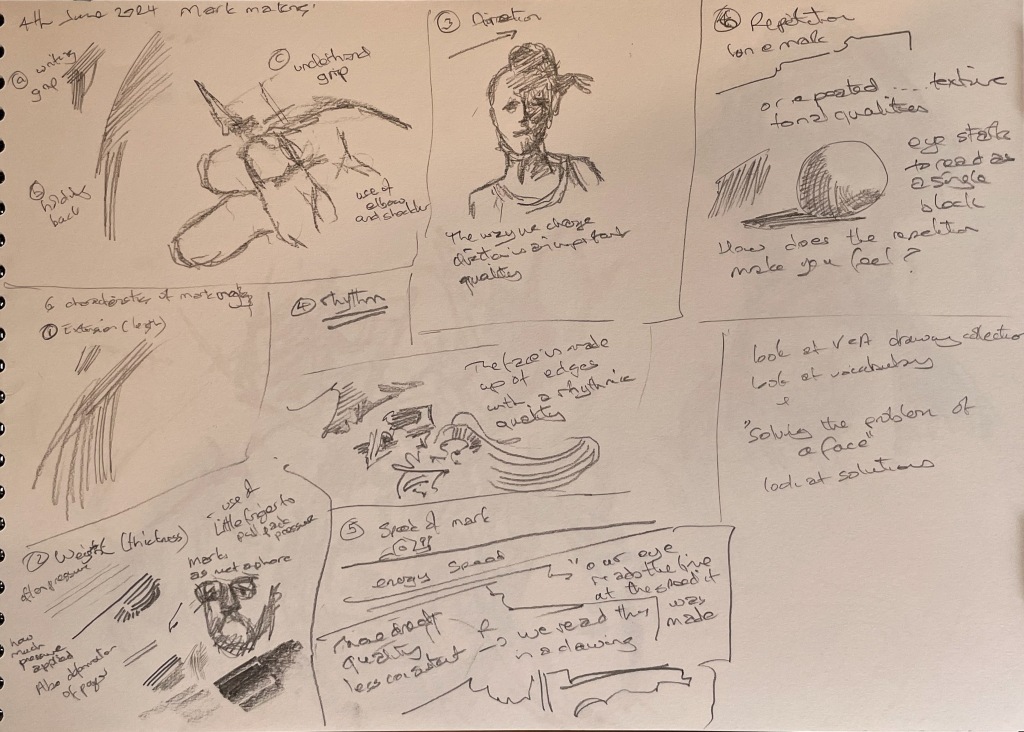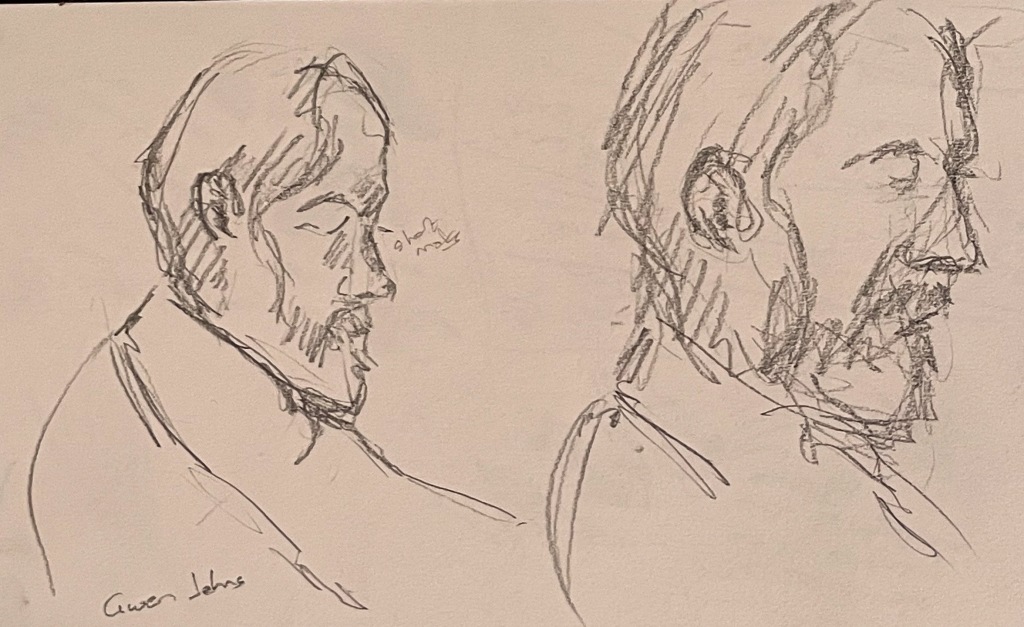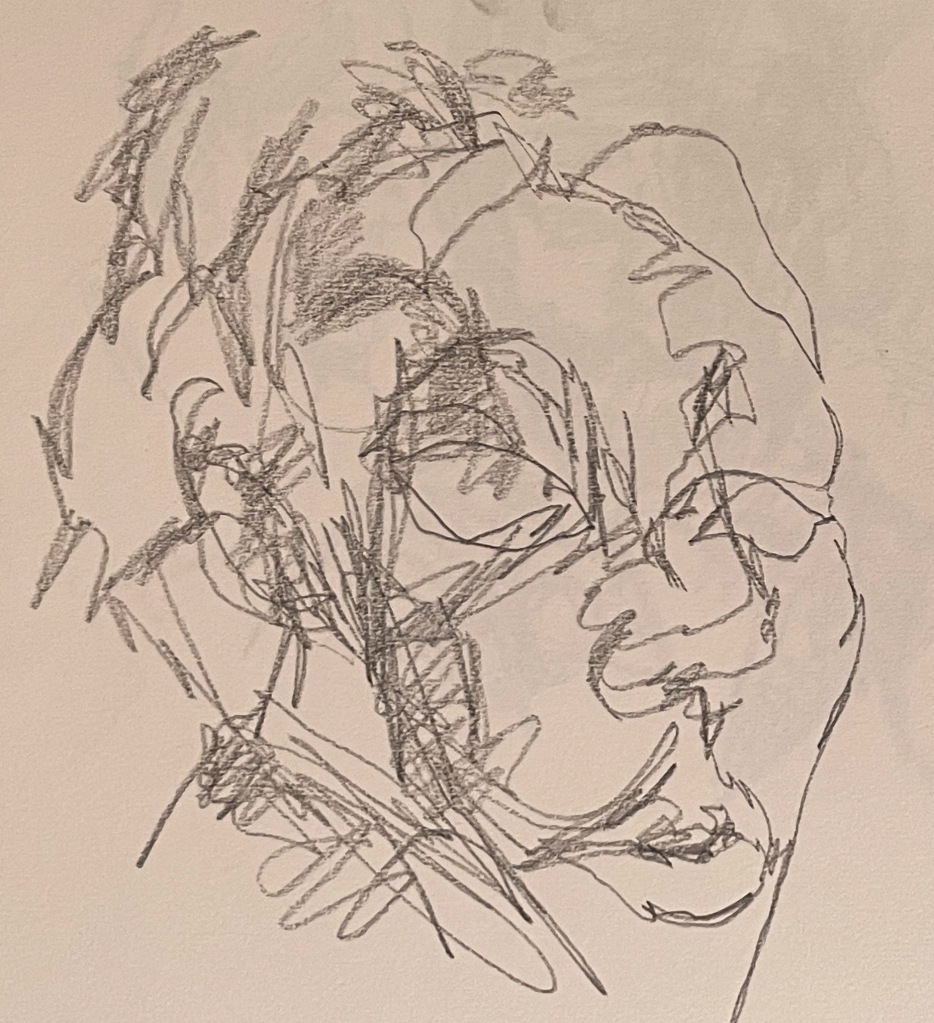Today was the first session of a 6 week online course on drawing portraits, run by the Victoria and Albert museum and led by artist Jake Spicer.
The focus of this first session was on mark-making.

I am an untaught artist. I should reflect more, when drawing, on the quality of my marks, and be more purposeful.
Jake led me to think about marks as a toolbox, a vocabulary, and a structure of symbolism. I liked his framework of thinking about marks from the building blocks of (1) extension (length) that comes in part from the grip on the pencil; (2) weight, relating to the pressure on the implement, that affects width of the mark and the deformation of the surface; (3) the direction, and change of direction, of the strokes; (4) the rhythm of the marks that is analogous to the beat or syncopation of music; (5) the speed of the stroke and (6) repetition or isolation of marks. Looking at a drawing we can almost read the artist’s process and thought from these qualities of the marks laid down.
While he was talking I scribbled an impression of Jake from the thumbnail in the corner of my screen.
Here we looked at the mark-making in three drawings in the V&A collection. The first is what was likely a quick sketch by Welsh artist Gwen John (1876 – 1939). I didn’t note the names of the other two artists, from earlier times, whose drawings we looked at.
We then went through art school-favourite exercises – the unseen and the semi-seen contour drawing before an 8 minute sketch using a reference photo of Jake’s colleague.
In my anxiety to get the whole picture onto the paper lest I be judged badly, I neglected the point of the exercise which was to focus on how to make each mark.







There’s something so wonderful about blind contour drawing every time. It’s a momentary release, and then we go back to worrying about what our drawing will look like…(K)
Sounds like an informative course. The 6 point structure is interesting, looking forward to what he says in the next session!
I like the whole idea of thinking about mark making – there is something very satisfying about just making interesting marks with a pencil or charcoal and not stressing too much about whether they depict anything particularly accurately.
Yes and I realise it’s not something I have thought about enough in my art.
Enjoy the course and keep mark making!
Your tutor has given you a lot to think about. Did he mention that clenching your pencil and resting wrist on board restricts loose movement? Arm off board to free the line and move from the elbow. Good on you. I’m doing a course on oil painting the figure come August. I’m keen to learn more. Enjoy your course.